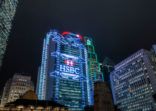Huge government-driven infrastructure projects such as China’s One Belt, One Road and the expected $1trn build-out promised by the US administration have put infrastructure investing in the spotlight.
But Sydney-based Robertson said such projects are hyped and, in any case, it is unlikely they will align with his investment strategy.
The fund holds between 25 and 50 stocks, most of them for three-four years.
The “preferred infrastructure” universe consists of listed companies operating in OECD member countries. They must own physical infrastructure, long-term concessions or government contracts giving them quasi-monopoly status and must provide inflation-linked returns.
“We are unashamedly stock pickers,” he said. “We have a very concentrated portfolio in a very well defined universe of `preferred infrastructure’ securities.”
Riding volatility
In theory, investors in an infrastructure fund should receive stable revenues in the form of dividends and have a low risk of capital loss. But markets don’t always work that way. “Markets tend to behave erratically in the short term,” said Robertson, adding that he may take advantage of volatility to increase positions.
As an example, he cited French-based satellite provider Eutelsat, one of the fund’s holdings. In May 2016, the company announced a profit warning, resulting in a 30% drop in price. “We felt it was a short-term aberration that provided a buying opportunity for us, so we aggressively bought into Eutelsat at that time,” said Robertson.
The company’s price has stayed essentially flat since then. “We’re still waiting for that to come to fruition, but we’re patient investors,” he added.
“Our return objective is Consumer Price Index plus 5%,” said Robertson. “Today with our position in Eutelsat we’re getting a 6% dividend yield. It almost covers itself whether or not the share price goes up.”
However, in December 2009, the fund’s managers were caught off-guard with their holding of Cintra Infraestructuras, a Spanish company operating a toll road in Canada. Cintra was merged with its parent Ferrovial Group in the wake of the global financial crisis of 2008, leaving minority shareholders stranded.
Europe risk
As of 31 January, 60% of the portfolio was invested in Europe and the UK. “The biggest risk we face [today] is our exposure to Europe,” he said. “It’s prudent for us to model recession and punitive discount rates in EU.”
At 7.9% of the portfolio, Atlantia, an operator of Italian toll highways, is the largest holding in the fund.
Robertson’s conservative value model assumes “fewer cars traveling down their roads in 2038 than actually travelled in 2008”. Even with such a drastic assumption the company meets the value investment criteria. “This stock is trading very cheaply on very low multiples, therefore we’re happy owning a very large portion of it in the portfolio.”
US utilities, which constitute a big share of index-based funds, are “grossly overvalued” at 17-18 earnings multiple, according to Robertson. Investors who look to them for safety are happy with relatively low dividend returns. But the prospect of higher interest rates in the US makes him question the safety of the capital.
“It’s a business that struggles to earn a 10% return-on-equity and to generate 2-3% earnings growth through the investment cycle. We think it doesn’t warrant 17 times price-to-earnings ratio.”

All fund NAVs have been converted to US dollars. Note that funds in this chart may be denominated in currencies other than the US dollar.
















